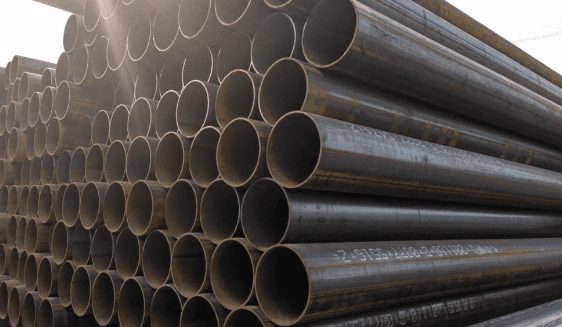In the realm of welded and seamless steel pipes, despite meticulous design and fabrication, imperfections are inevitable in certain areas. A welded flaw, in particular, hampers the functionality of the steel pipe, with a multitude of potential causes and effects.
Methods for detecting these defects in steel pipes vary. Typically, a range of testing techniques is employed to ensure adherence to weld standards. However, errors during fabrication can lead to the occurrence of defects. These flaws can be identified through visual inspection, non-destructive inspection, magnetic inspection, hydrostatic testing, among other methods.

Welded steel pipes can encounter several common defects during the welding process. Below, we'll explore these defects and their causes:
- Lack of Fusion: Lack of fusion refers to poor adhesion between the weld bead and the base metal, often resulting in incomplete penetration. This incomplete penetration creates crevices and channels in the weld root, which can become susceptible to corrosive substances. Causes of lack of fusion include inadequate adherence to welding procedures, improper electrode manipulation, electrode angle, arc length, and current setting.
- Undercut: Undercutting occurs when excessive current melts the edges of the joint, causing them to drain into the weld and leave a drain-like impression. This defect reduces the cross-sectional thickness of the steel pipe, weakening both the weld and the workpieces. Other causes of undercutting include insufficient filler metal deposition, incorrect filler metal usage, slow welding speed, excessive arc length, dampened electrode, and incorrect electrode angle.
- Inclusions: Inclusions come in two types: linear and rounded. Linear inclusions result from the presence of flux or slag in the weld, commonly occurring in welding processes that utilize flux such as submerged arc welding, flux-cored arc welding, shielded metal arc welding, and gas metal arc welding.
- Gas Inclusion: Gas inclusion encompasses various defects like pipes (wormholes), blow holes, and porosity. These defects occur due to gas entrapment within the solidified weld, which can be caused by factors such as excessive moisture from the electrode, high sulfur content in the electrode, or incorrect welding current.
- Cracking: Cracking in steel pipes can result from thermal shrinkage or a combination of strain accompanying phase change and thermal shrinkage. In welded stiff frames, cracking may occur due to a combination of improper procedure adherence and poor design, leading to high residual stress. Steel pipes with a carbon content exceeding 0.2% may develop brittleness and crack during self-cooling after welding.
In adherence to API specification 5L, section 9.10 outlines the standardized criteria for assessing defects in pipes. These criteria encompass various aspects such as surface conditions, imperfections, and defects.
According to 9.10.1.1, all pipes must be devoid of defects in their final state. Furthermore, 9.10.1.2 mandates the absence of cracks, sweats, and leaks in all pipes.
For imperfections detected through non-destructive inspection, compliance with acceptance criteria specified in Annex E is obligatory (9.10.1.3).
In the case of SAW and COW pipes, undercuts identified through visual inspection undergo scrutiny and treatment as delineated below:
- Undercuts with a depth of ≤ 0.4 mm (0.016 in) are deemed acceptable and are subject to treatment as per Clause C.1.
- Undercuts with depths exceeding 0.4 mm (0.016 in) but ≤ 0.8 mm (0.031 in) are acceptable under certain conditions specified in Clause C.2.
- Undercuts surpassing the limits outlined in Clause C.2 are classified as defects and are to be treated as per Clause C.3.
Furthermore, arc burns are unequivocally classified as defects (9.10.3), along with laminations, geometric deviations, hard spots, and other surface imperfections (9.10.4 - 9.10.7).
Regarding repairs, the API 5L standard, in conjunction with other ASTM pipe standards, permits rectification of defects. The acceptance criteria for such repairs can be negotiated within the contract terms prior to production. For detailed guidelines, reference to API 5L specifications and associated documents is recommended.








